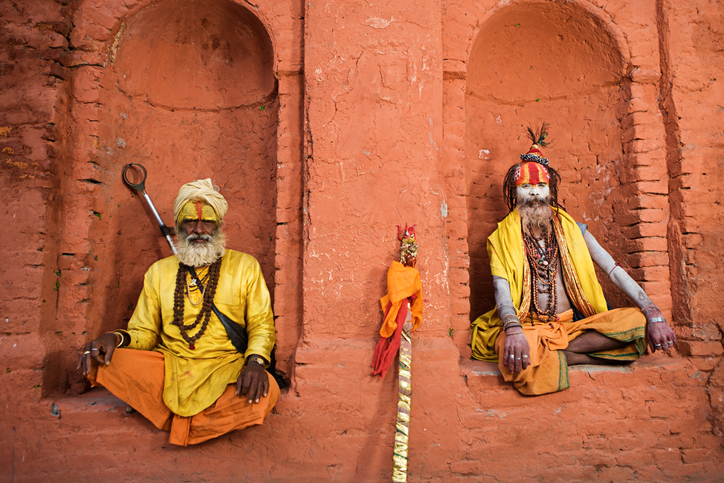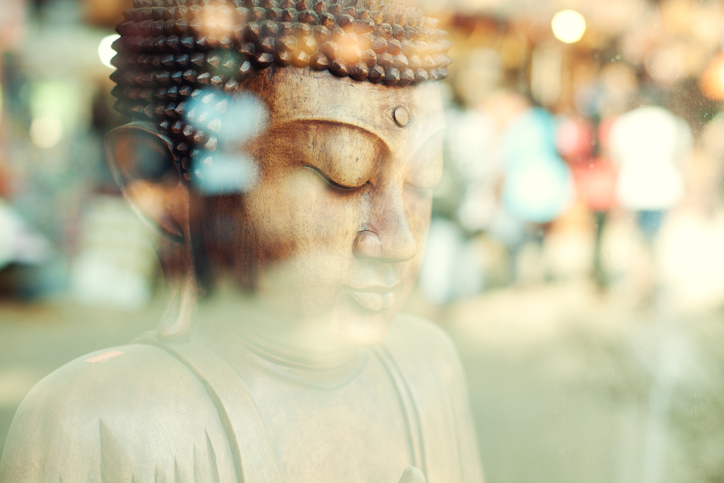What is the Oldest Continuous Religoin
Spiritual traditions throughout history have appeared as quickly as they have faded into oblivion. While most religions preach that their teachings have been around since the beginning of time, it is only a few ancient faiths that have stood the test of time. Today, a few of the oldest religions in the world are still in practice. Some of the major cultural traditions of Europe, the Middle East, India, and China have been independent over extended periods of time. Due to this, no single history of the study of religion exists.
What Is The Oldest Religion In The World?
What's important to understand is that tracing the origin and emergence of religion can vary dramatically depending on the point of reference. Most of what we know about the oldest religions of the world today are based on suppositions, archaeological records, and other sources that are subject to debate. It is natural to be curious about the inception of religion as we know it, as well as which religions have shaped the human experience into what it is today. We've listed some of the oldest religions in the world based on common scholarly beliefs. Each faith has its own outlook on the human condition and each one has different practices. Judaism, Christianity, and Islam are monotheistic. Hinduism provides space for the worship of numerous, powerful gods and goddesses. Buddhism and Daoism also permit the existence of multiple divine beings in various incarnations.
Here Are 8 Of The O ldest Religions Of The World
1. Hinduism – Origin: Indus River Valley (Modern-Day Pakistan), Circa 7,000 BCE

Hinduism is widely considered the world's oldest religion that is still in practice. And going by this belief it can also be considered as the world's first religion that is still practiced. This ancient religion does not have a particular founder or a single religious text. Instead, it combines many ancient traditions and beliefs. The Rig Veda is known to be the oldest scripture of Hinduism, dating back nearly 3,500 years. According to Hinduism, the four goals in an individual's life include:
1. dharma: living a virtuous life
2. kama: pleasure of the senses
3. artha: achieving wealth and success lawfully
4. moksha: release from reincarnation
Archaeologists have also discovered bull and cow motifs, considered sacred animals in Hinduism, dating back to around 7,000 BCE. This was during a time when an ancient civilization inhabited the area near the Indus River. It is speculated that the caste system existed even then. Millions of people around the world continue to practice the teachings of Hinduism, largely concentrated in India and the countries that surround it.
Also Read: See These Beautiful Hindu Temples From Around The World
2. Taoism – Origin: China, Circa 500 BCE

Also known as Daoisim, this ancient religion is primarily based on the teachings of the Tao Te Ching, a short book containing the teachings of Lao Tzu. It places great emphasis on spiritual harmony within the individual. There are two major schools of Taoism: Religious Taoism (Tao-chiao) which emphasises religious rituals aimed at attaining immortality; and philosophical Taoism (Tao-chia) which tends to focus on the writings of Lao Tzu. Prior to the Communist revolution, Taoism was one of China's strongest religions.
In popular culture, Taoism is best known for drawing on the idea of unity and opposites or Yin and Yang. The principle of Yin and Yang is that the world is filled with complementary forces of action and non-action, light and dark, hot and cold, etc. The aim is to create a balance between two opposing forces. This religion is practiced in China, Taiwan, Southeast Asia, and parts of Europe and America.
3. Confucianism – Origin: China, Circa 600 BCE

Confucianism is recognised as a religion, but not practiced as a traditional, organised one. It gets its name from its founder Confucius (an Anglicisation of his actual name K'ung-fu-tzu or Master K'ung). Confucius was interested in reviving the values and beliefs of the Zhou dynasty. Believers of Confucianism see it as a system of social and ethical philosophy. Over time, Confucianism has had a strong impact on the spiritual and political life of the Chinese people. Its influence has made its way to many parts of East Asia including Korea, Vietnam and Japan.
4. Jainism – Origin: India, Circa 600 BCE

Jainism is an ancient religion from India that emerged in the 6th Century BCE. It shares similar beliefs and traditions with Hinduism and Buddhism. Jainism does not have a single religious text that its believers refer to. Instead, adherents believe that the truth has been revealed at different times by Tirthankaras (prophets). These prophets have achieved the highest spiritual goal of existence. Followers of the religion believe that there have been 24 Tirthankaras so far. The last of these was Mahavira, who is considered the founder of Jainism.
5. Buddhism – Origin: Indian Subcontinent (Modern-Day Nepal), Circa 600 BCE

Buddhism traces its origins to one founder Siddhartha Gautama, who was allegedly a prince born in modern-day Nepal, 2,500 years ago. Siddhartha left behind his opulent life after witnessing human suffering for the first time ever. He contemplated the meaning of life and attained enlightenment and transformed into the Buddha, sitting beneath the Bodhi tree (the tree of awakening).
Ever since, all followers of Buddhism practice his peaceful teachings and seek the path of enlightenment. The four noble truths of Buddhist teachings—Existence is suffering (dukhka); suffering has a cause namely craving and attachment (trishna); there is a possibility of cessation of suffering which is nirvana; there is a path to the cessation of suffering—are meant to start followers on their journey to ultimate release from the endless cycle of birth and death.
6. Shinto – Origin: Japan, Circa 700 BCE

Many believe that Shinto officially began only after Buddhism was introduced to Japan around the 6th Century BCE. However, archaeological records mention that Shinto's roots date back to 700 BCE with some documents dating back even further. Many Buddhist elements are mixed into the Shinto faith and traditions. One of the guiding principles of the Shinto religion is the idea that everything possesses a spiritual essence or energy called 'kami'. Mountains, rivers, places, animals and people are said to have 'kami' within them.
The belief in the importance and beauty of nature is also integral to this religion. Shinto has no founder and no official sacred scriptures. The ruling aristocracy declared Shinto to be Japan's state religion during the Meiji Period (1868 – 1912). Shinto and Buddhism continue to remain an intrinsic part of Japanese society and culture.
7. Zoroastrianism – Origin: Ancient Persia (Modern-Day Iran), Circa 1,500 BC

Zoroastrianism was officially founded in the 6th Century BCE by the prophet and reformer Zoroaster. Archaeological evidence shows that the religion's roots trace back to 1,200-1,500 BCE. Zoroastrians believe that there is only one God called Ahura Mazda. At one point in time, it was considered to be one of the most powerful religions in the world. Zoroastrianism was also the official religion of Persia from 600 BCE to 650 BCE. It shares many major concepts with religions such as Judaism, Christianity and Islam. Zoroastrianism is also dualistic focusing on a twofold nature of the world (good and evil or heaven and hell, for example).
8. Judaism – Origin: Southern Levant (Modern-Day Israel, Palestine, And Jordan), Circa 2,000 BCE

Judaism was officially founded by Moses, although Jewish history traces it back to Abraham, who is considered to be the ancestor of the Jewish people. One of the oldest religions in the world, Judaism has several sacred texts but the most important is the Torah, which is part of a larger text known as the Tanakh or Hebrew Bible.The most important teachings of Judaism is that there is only one God who wants people to do what is just and compassionate. Modern Judaism is divided into three main movements:
Reform Judaism: Followers retain their Jewish identity but take on a more liberal and relaxed approach to many beliefs and practices.
Orthodox Judaism: Which is the most conservative and retains nearly all traditional practices and rituals.
Conservative Judaism: Which lies in the middle and takes a moderate approach to Jewish practices.
What Does Exploring Some Of These Old Religions Reveal?
It is always an incredibly fascinating journey to understand how religion has evolved over the years and what it has morphed into in today's modern times. Religion has been a driving factor in the lives of many individuals and has a major impact on worldviews and the way they choose to lead their lives. Understanding the oldest religions in the world helps us see what ideas and beliefs we have chosen to discard and what we have considered worthy enough to keep around.
A Brief History Of The Origins Of Religion
Both in the ancient world and in the Middle Ages, approaches to religion were a result of attempts to criticize or to defend particular systems. Further, it was aimed at interpreting religion in harmony with changes in knowledge. Religions became global as commercial and cultural interaction between people across large areas were shared. These religious systems were foundations of cultural communication and moral expectation. Because of this, people were meeting, sharing ideas, and doing business with one another beyond specific geographies. People were quick to adapt to religion because it provided the structure and meaning, the same kind that is offered when one is part of a tight-knight community. Religious texts and tenets were able to speak to large groups of people, offering them a new kind of meaning and helping them define a purpose for their lives.
As time progressed, the nature of religion began to be questioned alongside the growth of various disciplines like sociology and psychology during the 19th century. These fields offered a more analytical approach to religion while theology became more sophisticated, basing itself on science. This promoted an interdisciplinary study of religion and its origin, working to understand the inception of religion and how people are driven by it.
Also Read: What Is Religious Tourism And What Are The Challenges It Is Facing?
Which was the first religion on earth?
According to most scholars, Hinduism is the world's oldest religion with roots dating back to almost 4,000 years.
What are the 5 major religions in order from oldest to youngest?
Hinduism, Zoroastrianism, Judaism, Jainism and Confucianism.
What is the oldest religion in order?
Hinduism is the oldest religion followed by Zoroastrianism, Judaism, Jainism and Confucianism.
Source: https://travel.earth/oldest-religions-in-the-world/
0 Response to "What is the Oldest Continuous Religoin"
Post a Comment